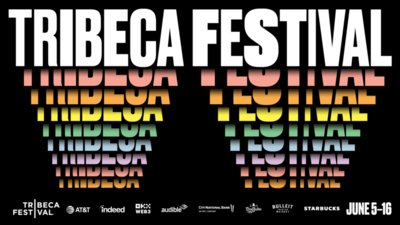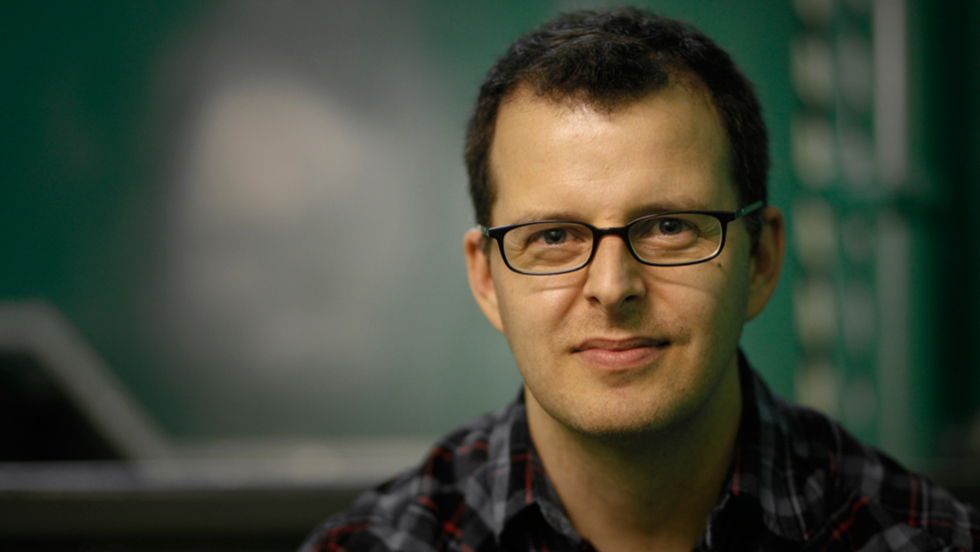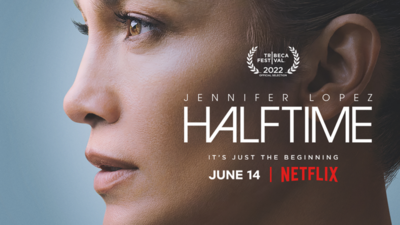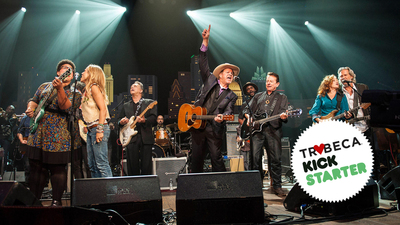
BY KRISTIN MCCRACKEN |
"Side By Side" Director Chris Kenneally on How Keanu's Curiosity Sparked the Film
The new documentary “Side By Side” is a must-see for all fans of film—those interested in its 120-year history as well as those curious about where the medium is heading in the century to come. Watch it today on VOD or on iTunes!

Produced by Keanu Reeves and directed by Chris Kenneally, Side By Side is a riveting, entertaining new documentary about the current—and increasingly widespread—shift in filmmaking technology. As directors and cinematographers (in many cases) abandon traditional celluloid filmmaking in favor of rapidly developing digital tools, what, if anything, are we losing in the process? Are fears that movies will devolve in quality well founded? Or are these worries much ado about nothing? Is it a moot point anyway, given the foregone conclusions of the digital revolution?
These are the sorts of fascinating, divisive questions Side By Side explores via in-depth interviews with professionals involved in all stages of the filmmaking process. From pioneering directors like James Cameron and Martin Scorsese to artistic innovators like Christopher Nolan and Lena Dunham, from cinematographers like Wally Pfister and Michael Chapman to visual effects standouts like Dennis Muren and Adam Valdez (and so, so many more!), the range of characters in Side By Side presents an impressive array of voices on all sides of the digital vs. film debate.

For the past several weeks, Tribeca has been releasing a series of daily clips from the movie that didn’t make the final cut. On this, the long-awaited VOD release date, we invite you to dive into the wormhole of these snippets, and we challenge you to come out the other side uninspired. (View the entire Side Swipes series here.) Everyone has a lot to say on the subject, and we’re sure you will too.
We sat down with Kenneally last week to shed some light on how exactly Side By Side came to be. Not surprisingly, the movie grew organically out of 1) very real conversations Kenneally was having with colleagues on the front lines of the revolution, and 2) Keanu Reeves’s insatiable curiosity, which is well evidenced throughout the film.
Tribeca: How did you and Keanu connect in the first place? Did he have the idea for the movie, or did you?
Chris Kenneally: I was working as post-production supervisor on a movie called Henry’s Crime, which Keanu produced and acted in. He was really curious and wanted to know how post-production worked and how the technology was changing. One day we were sitting in Technicolor, and we were watching the two colorists at work—side by side—to make sure that the chemical print matched the digital work that we had done. The two guys were kind of characters, and there was just this way they talked to each other that was funny.
As Keanu and I started talking naturally about a lot of the topics and questions we would eventually explore in Side By Side, he said, “You know what? We should make a movie about this.” I had just made this doc about competitive eating, and he said, “Do you want to do it? Let’s do it!” And I said, “Yeah, of course.” So we sat down and came up with a whole bunch of ideas.
Tribeca: How did you figure out who would be involved? Did you start with a wish list? Did Keanu have access to all the filmmakers?
Chris Kenneally: Yeah, we started with a wish list—if we could have anyone in the world. We didn’t want it to just be famous people—directors, cinematographers and actors—we also wanted to talk to behind-the-scenes people: the colorists, the editors, the people who actually make the cameras.
One of the first places we went was CamerImage, this film festival in Poland that’s just for cinematographers. All of these guys come every year—to the middle of Poland—so we got to grab a bunch of interviews there, right off the bat. That was the beginning of the project; we learned a lot, and talking to them sort of helped us structure the film and realize what we really needed to ask. Once we had that list of people we had already interviewed, that helped when we’d request interviews from other people. It started building, and people began to see it as a real project.
Plus having Keanu attached was huge. He’s really well liked, and people enjoy talking to him. And he knew some of the people, which helped—for example, I don’t think we would have gotten the Wachowskis without him.
Tribeca: This film is a real education in the technology of filmmaking. How much did you learn during the filmmaking process? Were there things you didn’t know?
Chris Kenneally: Totally. As a post-production supervisor, you have to know some things to be able to do your job. But being able to talk to these experts, people on this level, I learned a lot. Even though I was around when some of the [developments were] happening, [it helped] just to have it all laid out there: okay, this camera happened and this led to this led to this led to this film, and this piece of technology allowed artists to do this, which forced camera makers to create this… Just to see it all as a whole—I hadn’t really seen the history of how the digital camera developed and where it is today.
Tribeca: Do you hope that this movie shines a light on certain people and gives them credit, people about whom the audience truly has no idea?
Chris Kenneally: I do, and there are a lot of other people who deserve credit—who developed and first used the technology. To me, it was inspiring that humans can start with this idea, this sketch of an electrical device—and just to see how that was taken, to see how scientists and artists, kind of together, brought this technology forward.
And there was criticism—there’s always a lot of resistance when something is new—artists don’t want to use it, and certain people don’t think it’s good enough. And it wasn’t! Digital wasn’t as good as film in just pure image quality, but it’s gotten better and better and better.
I love film—I’m not anti-film—but I think that the tool of digital is an amazing thing, and it’s really exciting to be in cinema and moviemaking right now. So many people have the ability to tell their stories, and to create beautiful looking images that maybe they wouldn’t have had access to—because of where they live, or their comfort with technology, or their access to money—and now they can do it. I think that you can’t argue against that—freedom and democracy are hard to argue against.
Tribeca: And yet, people do argue against it in your film! I thought the counterpoints were fascinating—each benefit of digital could be turned around as a negative, depending on the interviewee’s point of view. “Democratization is great!” “No, democratization means there’s a whole lot of crap!” Were you delighted when people had strong opinions?
Chris Kenneally: Oh, I loved when people had strong opinions, arguments—people who are passionate. Like Wally Pfister: whenever he comes up on screen, his energy and his passion for film and the way he’s unafraid to give a strong opinion—it’s a great thing in real life, and also in the movie.
With the democratization debate, I guess some people think there’s too much crappy stuff out there, but that’s one area where I personally kind of disagree. There’s crap out there? Don’t watch it! There’s also more communication on the Internet and digital distribution and ways for good things to be found out about, and I think that good work will rise to the top. Just because something was shot on a film camera doesn’t mean it was good. I’ve watched a lot of great films, and I’ve watched a lot of crappy films, and they’ve all been done on film.
But I tried not to really interject too much into the movie. We wanted the characters who we interviewed to speak, and for the audience to be able to take that in and come up with their own thoughts about it.
Tribeca: What percentage of your interviews do you think were total film-only diehards?
Chris Kenneally: There are a few, but the people we interviewed are all very intelligent, thoughtful people, so they can see both sides of the debate. And it didn’t break down like a lot of people think—with all the young people being pro-digital, not caring about film and all marching forward, while all the old people are hanging onto this past glory. It wasn’t like that at all. It didn’t have anything to do with age, just personality.
Some people just look forward. Michael Chapman, who shot some of the most beautiful things on film—Raging Bull, Taxi Driver—he’s never shot on digital, but he’s all for it. Joel Schumacher, he’s someone who’s always looking forward—I don’t think he’s really thinking about technology per se, but he’s just someone who looks forward in life, that’s just his personality. Then there were some young people who loved film, and that’s what they wanted to shoot.
Tribeca: Peter Jackson caused quite a stir when he released the first trailer from The Hobbit, which he is shooting at a higher frame rate. Is that what’s next?
Chris Kenneally: I think so—that’s something that digital technology allows, to shoot at a higher frame rate. Movies shoot normally at 24 frames per second, and I think we’ve gotten used to that—it’s not exactly real-life; some people call it a dream-like quality. We’ve come to learn that that’s cinema. When we watch TV, that’s shot at 30 frames per second, and people think it’s not as cinematic or beautiful as film, for some reason.
But the reason it’s 24 frames per second is because that’s almost the limit of what looks good, the smallest amount of frames per second that doesn’t look like the Keystone Cops. I’m not sure if the decision of 24 frames per second was even made for any artistic reason to begin with—it was [probably] made for budget! So now people say, “Oh! How can he dare break that [tradition]? Why is he shooting this different frame rate?” I feel like Jackson got a lot of negativity for doing The Hobbit trailer like that. But he’s the artist, he’s the creator; he should do it however he wants.
When we talked to Dennis Muren at ILM—he’s won the most Oscars for special effects, from the days of modeling up until the present, and he’s still winning things, still pushing the art form forward—he was super excited about the higher frame rates, and how that’s going to make the images look.
People are always resistant to something new, but I think we encourage people who experiment and want to do something different. They’re the people who are out there making the mistakes, and taking the criticism. Like George Lucas: I don’t know why people criticize him, but it happens all the time. He did all of this stuff with his own money, and his own time! I think we should encourage new art, and people who are pushing the boundaries with technology and ideas.
Tribeca: I loved when Bradford Young talks about how intimate and private it is for him to watch a movie on his iPhone. (I watch movies on my iPad all the time.) How do you feel?
Chris Kenneally: The easy answer is to be, “Oh, how dare you!” Everyone would use the example over and over of Lawrence of Arabia: “Would you watch Lawrence of Arabia on an iPhone?” So there’s a shot or two in the movie of this giant guy in the subway watching a movie on his little phone, and if you look at the movie, you’ll notice it’s Lawrence of Arabia. [laughs]
Tribeca: This movie is going to be on VOD, and people can watch it on lots of different devices. Does that upset the filmmaker in you? Are you precious about it?
Chris Kenneally: I think the best way to see a movie is on a giant screen in a movie theater, and there’s something about making a plan to see a movie: when it’s going to happen at this particular time, at this particular location, and you go there and you sit and you know you’re not leaving or answering the phone or whatever for two hours, you get sucked into a movie in a different way. You could create that situation at home, I guess, but it’s different.
But there are also really great [other] ways to watch movies now. If you’re sitting at home and you’re close enough to a television, the ratio is the same as being in the back row of a movie theater on a smaller screen. And audio too, once you have headphones in—BAM! It takes over your whole brain.
Tribeca: There are some really funny lines in the movie—Joel Schumacher talking about how any actor looking at dailies is really only looking at his hair.
Chris Kenneally: Yeah, that was funny. See, you say it’s an educational sort of documentary, but we wanted to make it really entertaining. At first when Keanu and I decided we really wanted to make this movie, we realized that it could be so boring that no one would want to watch it. So we really went out of our way to put together something that’s entertaining—and I think there a few laughs in the movie, and it’s not just this dry textbook thing.
When we did the interviews, they became these kinds of conversations. I think that hopefully helps the viewer feel like these people are sitting there in their living rooms.
Tribeca: And Keanu is just so curious—it really comes through.
Chris Kenneally: Yeah, he is, he’s really passionate about it. It’s not just like some celebrity going, “Oh, I’ll do it…” He really wants to learn; he wants to ask this guy this question.
Side By Side is currently available on a range of VOD platforms nationwide, including iTunes, Amazon, and Vudu, and via numerous cable/satellite/telco providers. How can you watch it? Find out here.
Theatrically, Side By Side is now playing at the Laemmle NoHo 7 in Los Angeles, with Boston (August 24), New York (August 31) and more cities to follow.
Side Swipes is a daily series of exclusive clips that didn’t make the final cut of the movie. Catch up with the series to date here.
Watch the trailer:

